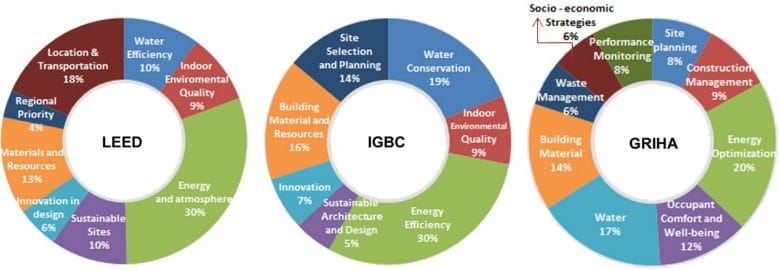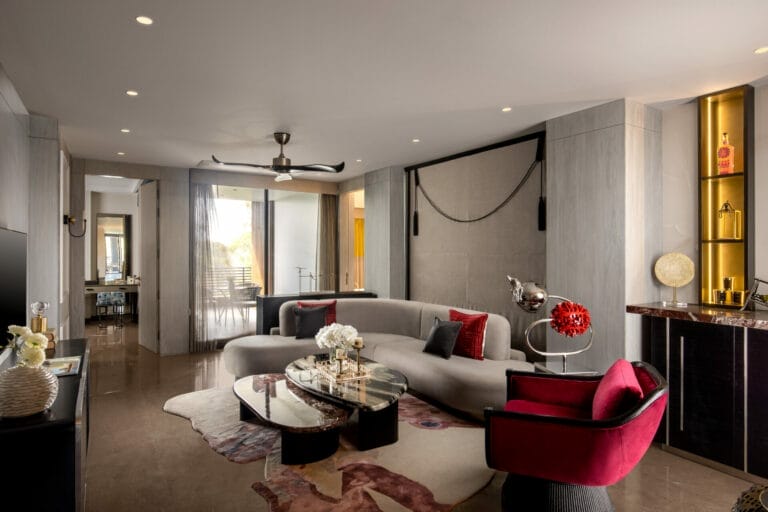Ratings and certifications define the extent of sustainability of any structure following the set parameters and categories. LEED or Leadership in Energy and Environmental Design is one such system and is the widely used green rating system in the world. It provides a framework for energy efficient, cost-saving, and green healthy buildings.
Around 178 countries have set different targets to achieve their respective net-zero goal and a few countries like Madagascar, Cambodia, and Liberia claim to be carbon neutral and Bhutan claims to be carbon negative. Mr. Nagesh Gupta – Senior Manager, Technical Solutions, Green Business Certification Institute was a presenter at the Green Building Summit 2022 organized by The Decor Journal India. He tells us that apart from the countries various construction companies across the globe are also working towards achieving carbon neutrality for their portfolio of projects and following strict internal goals to achieve the target of Net-Zero.

As said by LEED professionals, “LEED is Global, regional, and local”. It has its presence in over 178 countries and covers more than 1 lakh projects across the globe. Further shedding light on the demographics of India, the country has 3369 LEED projects covering 167 million+ total GSM of space. Projects go through a verification and review process by GBCI and are given points based on different criteria. The total points correspond to LEED certification levels.

GBCI has launched a certification called LEED Zero which further bifurcates to LEED Zero Carbon, LEED Zero Energy, LEED Zero Water, and LEED Zero Waste for the already existing structures. This certification is valid only for 3 years and is provided after verifying the 12-month operational data of the building. GBCI is also planning to launch LEED Zero for Design to get certifications for new structures.
Another rating system that is majorly used in India is the IGBC rating system by the Indian Green Building Council. IGBC is a part of the CII-Green Business Center that started in 2001 and It evaluates the performance as per Certified, Silver, Gold, or Platinum levels. The council brings together the hosts of sustainable practices to reduce the environmental impact and approach that takes into consideration the life cycle impacts of a structure.
Architect Sohrab Dalal – Cofounder of Design plus Architecture shared at the Green Summit panel discussion, “The great thing about IGBC is it has 29 different categories of projects which have made it easier to get the project in the correct category”.
IGBC provides architects and designers with around 30 different categories that cater to projects of different scales and types. The IGBC Green New Building rating system addresses the issues of national priority which include water conservation, reduced use of fossil fuels, energy efficiency, waste handling, lesser dependence on virgin material use, and health & well-being of inhabitants.

Another prevalent rating tool in India is GRIHA – Green Rating for Integrated Habitat Assessment. It is a system that aims to minimize a building’s resource consumption, overall ecological impact, and waste generation to within the nationally acceptable limits. It evaluates the environmental performance of the building over its entire life cycle from construction to demolition and thus states the standards that define a green building. It is a 100-point rating system that provides stars to the project as per their combined scores under different categories.
WELL Building Standard is another certification launched by USGBC to encourage the health & well-being of the occupants as a core design principle. It is a performance-based certification for measuring, evaluating, certifying, and monitoring built environment features that impact the user through the air, water, nourishment, light, fitness, comfort, and mind.
Architect Sohrab Dalal – Cofounder of Design plus Architecture also adds, “ In the Post-covid era, it’s not only how the building is performing but also the environment that is created for the people that are using the building”.
Working along with the same principle, WELL functions on the research on the connection between the built environment and an occupant’s well-being. It aims to provide a space that enhances the sleep pattern, fitness, nutrition, mood, and performance of inhabitants through a better environment. The certification process has over one hundred features that a project goes through to get WELL certified.

These ratings and certifications are devised to ensure a greener and healthy built- environment for humankind. The choice of ratings not always depends on the architects and designers but also as Architect Mitu Mathur – Director of GPM Architects & Planners says during the panel discussion at the Green building summit, “ It is usually the call of the client”. So the clientele needs to be aware of the certifications and ratings and go ahead with whatever suits their project and their pockets.






















